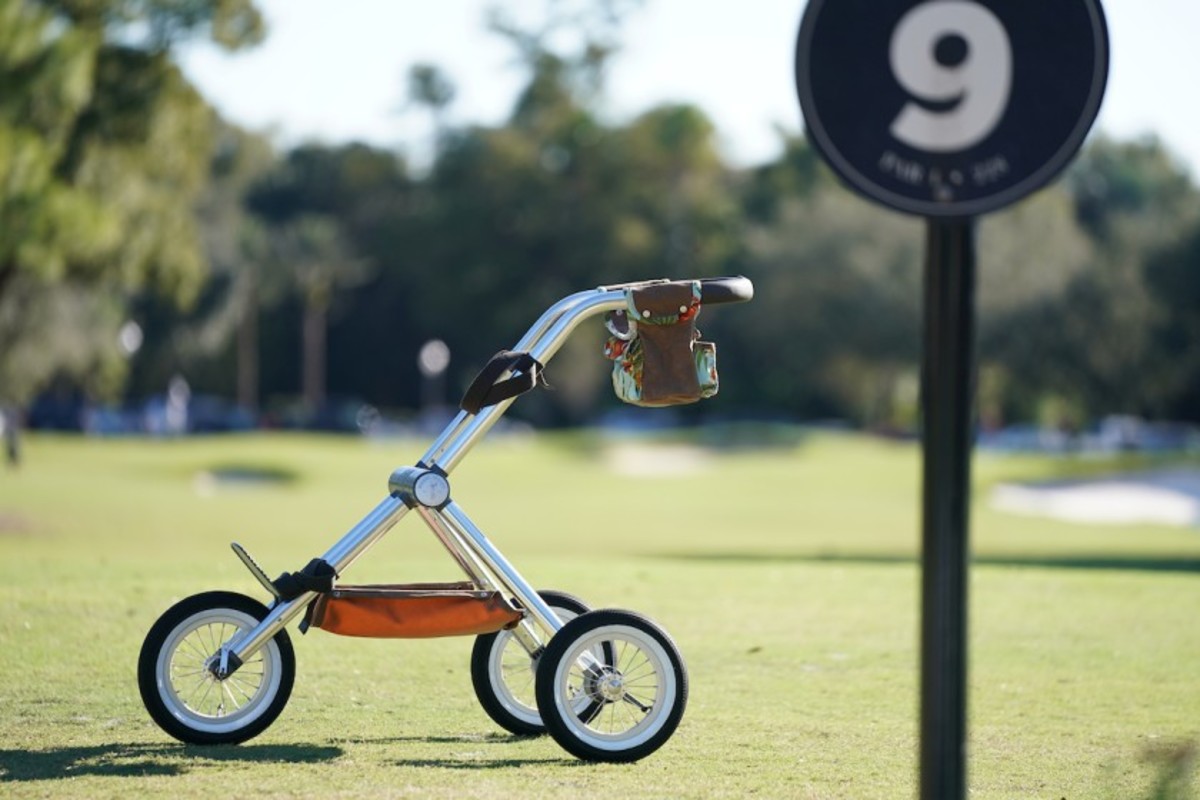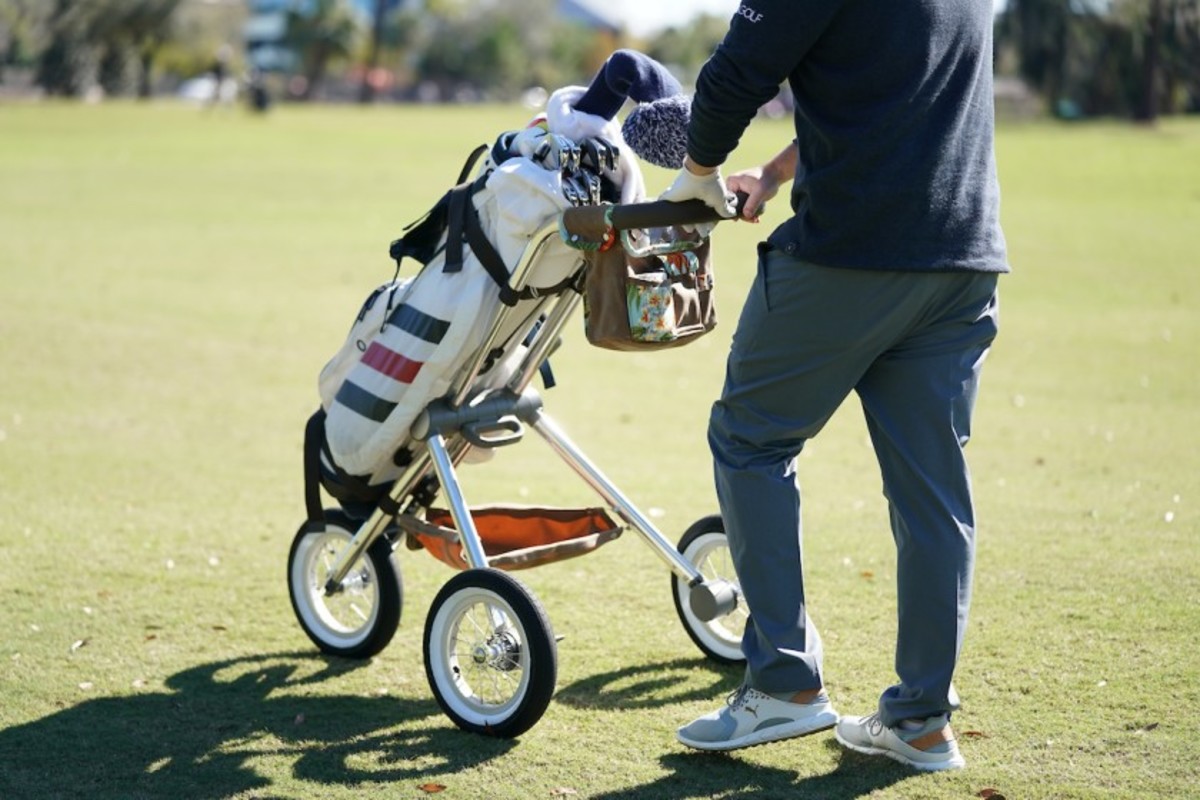Walker Trolleys goes retro for modern-day golf experience

Almost five years ago, as Brad Payne trekked his way up the 17th fairway at San Francisco's Presidio Golf Course, an idea began to germinate. With his golf bag cradled in a cheaply made, mostly plastic pull cart that he dragged behind him, Payne slowly made his way to the green of the steeply uphill par 4, along the way thinking that what discerning golfers really needed was a better pull cart.
It was a good idea, Payne decided, but that was as far as he took the concept at the time.
Two years later, during a late-spring trip to Scotland in 2017 — Payne's first visit to the venerable links land that gave birth to the game of golf — the idea resurfaced, this time with greater intensity. At Brora Golf Club, during Payne's third round of the trip, the chasm that existed between the quality of the pull cart that he was using and the quality of the golf course that he was playing was appallingly evident.
"You're playing a course that's several hundred years old designed by James Braid with sheep around the fairway and you've got this modern, neon-colored plastic thing in your hands," Payne says, recalling that influential moment. "It just didn't fit.
"They're certainly functional," he adds of the uninspiring, contemporary pull carts that were available to him during that trip. "They work. It’s just the overall experience, the aesthetic … you can make a better connection by using a product that feels like the experience that you’re having while playing the golf course. It’s an enhancement of the experience that fits with the tradition and the history."

By the end of that trip, Payne had been met with similar experiences at every course he played, an itinerary that included rounds at Royal Dornoch, Cruden Bay Golf Club, The Old Course at St. Andrews, Carnoustie, and Prestwick Golf Club. On the plane ride back home, Payne’s idea of a high-quality, classically styled pull cart began to round into form, only it now featured Payne as its creator.
One month later, at a family barbecue on the Fourth of July, Payne talked through the idea with his brother-in-law, a former collegiate golfer who now works as a designer of high-end baby strollers. By the end of that brainstorming session, the genesis of Walker Trolleys was formed.
In designing the company’s first model, the Cape, which debuted at the PGA Merchandise Show in January, Payne took inspiration from 1920s and '30s golf — a timeframe that he deems to be the "golden era" for the sport — as well as classic industrial designs from that same period, such as Ford’s Model-T and Rolls-Royce's Silver Ghost. He also drew from modern-day styles that feature a retro aesthetic, including English prams (four-wheeled baby buggies) and bicyles from Detroit Bikes.
The primary goal was to create a pull cart that was sleek and architecturally clean; and that meant perfecting the central hub and folding joint. Payne wasn’t concerned about creating a pull cart that could collapse into a space-efficient cube or one that could lie almost perfectly flat when not in use. In his opinion, the Transformer-like features of other carts on the market were more a detriment than an allure.
"It was more about the overall simplicity, the design aesthetic, and the appeal of the trolley when it is unfolded," Payne said. "The way we think about it, you’re going to spend five hours on the course with the trolley, so you should really be proud about how it looks and feels when you’re using it."

With a prototype of the Cape model — which retails for $399 to $439 — in hand, Payne has approached a select number of high-end golf resorts, proposing a partnership that enhances the walking golfer’s experience on those courses while also increasing Walker Trolleys’ exposure and brand awareness. In time, those properties may one day utilize a fleet of Payne’s pull carts.
Even if those resort partnerships should materialize, Walker Trolleys is committed first and foremost to the individual consumer. The company is currently accepting pre-orders and anticipates that deliveries will begin in late June.
"Our singular goal is to make walking golf cool," Payne said. "To build a brand around walking golf and to get more people to want to walk."
On that topic, Payne is motivated by golf developers like Mike Keiser, whose resorts (Bandon Dunes, Sand Valley and Cabot Cape Bretton) have proven that exceptional golf experiences can be had without the use of riding carts.
“In the UK, Ireland, and Australia, golf is played walking 100 percent of the time,” Payne said. "In this country we still have a long way to go. I’m hopeful that over the next 10, 15 or 20 years that more people will choose to walk as opposed to riding in carts. And if we can be a part of that change in getting people to walk, I would be completely satisfied.”
Sign up to receive the Morning Read newsletter, along with Where To Golf Next and The Equipment Insider.
